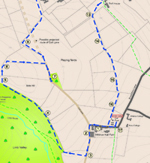A Roman Estate Centre at Whirlow Hall Farm, Sheffield
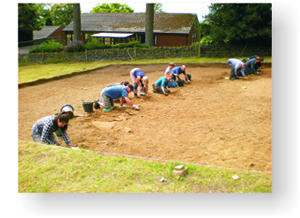 |
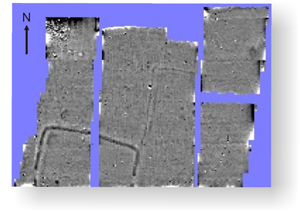 |
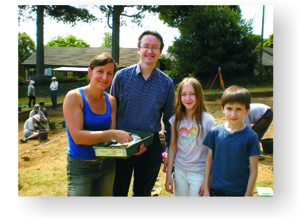 |
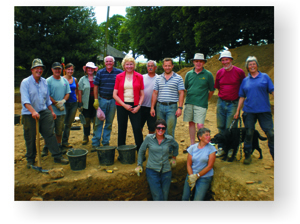 |
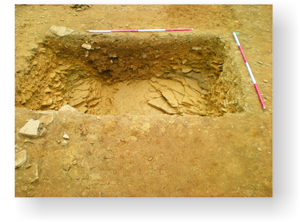 |
Excavations at Whirlow Hall Farm, Sheffield, have revealed the remains of an unexpected Roman site. It comprises a rectangular enclosure approximately 70m square defined by a ditch that has been cut down to bedrock. There were two entrances; one on the east side that looks down the Sheaf valley towards Sheffield City centre, and one on the west side that opens out on to an ancient sunken track that is thought to have connected to the Roman road network in the area near Ringinglow.
The excavations have concentrated on the west entrance and have revealed an entrance causeway with evidence for a substantial timber gateway. The enclosure ditch had a low wall around its inner edge which would have stopped inhabitants falling in and help to keep wild animals out. A metalled surface was revealed leading through the entrance causeway of the enclosure and extending across the interior of the site. Inside the gateway on its north side the partial remains of a rectangular or square building was discovered which had stone foundation walls. Some of the floor level to this building survived but only a small part of this building was able to be uncovered in the excavation trench.
A wide range of Roman pottery was found in these deposits including Samian Ware from Gaul, Grey Ware, Derbyshire Ware, Mancetta and other ceramic types. Fragments of lead objects were recovered by metal detecting in the eastern half of the enclosure, together with a couple of coins that have yet to be identified. The constructional form and techniques used to build this site, the shape of the internal building and the presence of Roman pottery, including high status material, imported from foreign, regional and local workshops implies that this was a high status site, perhaps more akin to an estate centre and trading post rather than just a farmstead. The site has many more secrets to reveal and we hope further research will help to understand more about the site and Roman Sheffield.
As part of this project, a self-guide leaflet has been produced for those who wish to walk the Whirlow Estate and discover more about the heritage of this part of Sheffield. To download the leaflet please click on the map below:
The reports detailing the desk-based assessment, fieldwalking, historic building recording, geophysics and excavation can all be downloaded by clicking on the links below:
